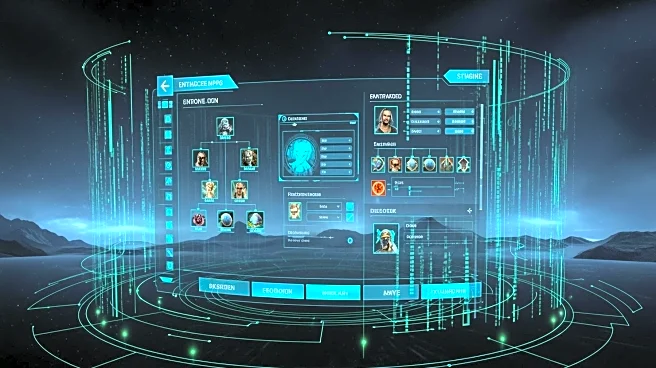What's Happening?
In 2025, players of major MMORPGs continue to face the persistent issue of inventory clutter, often filled with various items, currencies, and crafting materials. This phenomenon, commonly referred to as
'inventory bloat,' is a hallmark of the genre. Despite efforts by game developers to manage this issue, players frequently find themselves overwhelmed by the sheer volume of items, many of which have unclear or limited use. The problem is exacerbated by the age of these games, with titles like World of Warcraft and Final Fantasy 14 being over a decade old, leading to a buildup of in-game currencies and items that players must navigate.
Why It's Important?
The ongoing issue of inventory bloat in MMORPGs highlights the challenges developers face in balancing game complexity with player experience. As these games age, the accumulation of items and currencies can deter new players and frustrate veterans. This situation underscores the need for innovative solutions to streamline inventory management without compromising the depth and engagement that players expect from these games. The economic implications are significant, as poorly managed in-game economies can lead to inflation and imbalance, affecting player satisfaction and retention.
What's Next?
Developers may need to explore new strategies to address inventory management, such as implementing more intuitive systems for item categorization and currency consolidation. Future updates could focus on reducing the number of redundant items and simplifying the process of acquiring and using in-game resources. Additionally, there may be a push towards creating more dynamic and responsive in-game economies that can adapt to player behavior and preferences, ensuring a balanced and enjoyable experience for all players.
Beyond the Headlines
The persistence of inventory bloat in MMORPGs also raises questions about the sustainability of long-term game development. As these games continue to evolve, developers must balance the introduction of new content with the maintenance of existing systems. This challenge highlights the broader issue of how aging game infrastructures can impact player engagement and the overall health of the gaming community. The need for ongoing innovation and adaptation is crucial to the future success of these popular online worlds.











